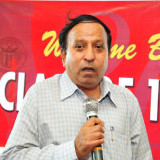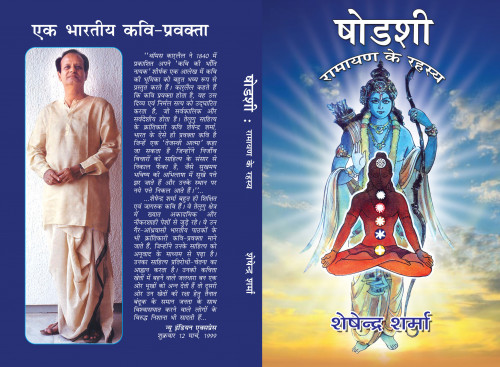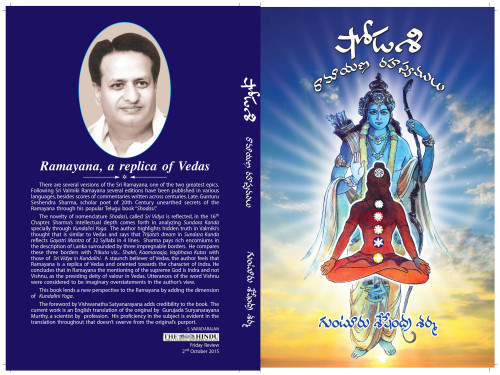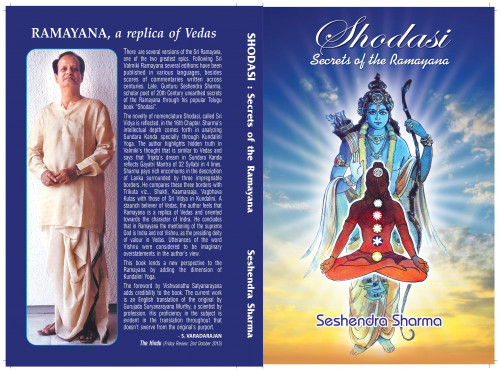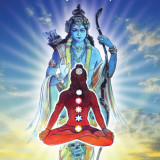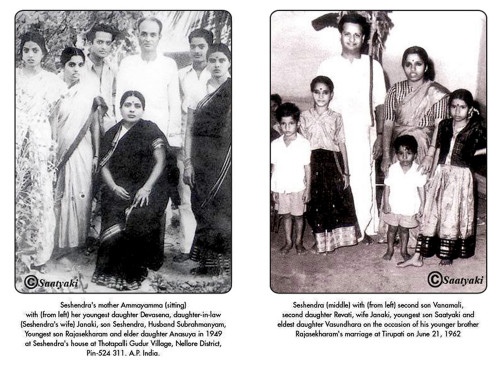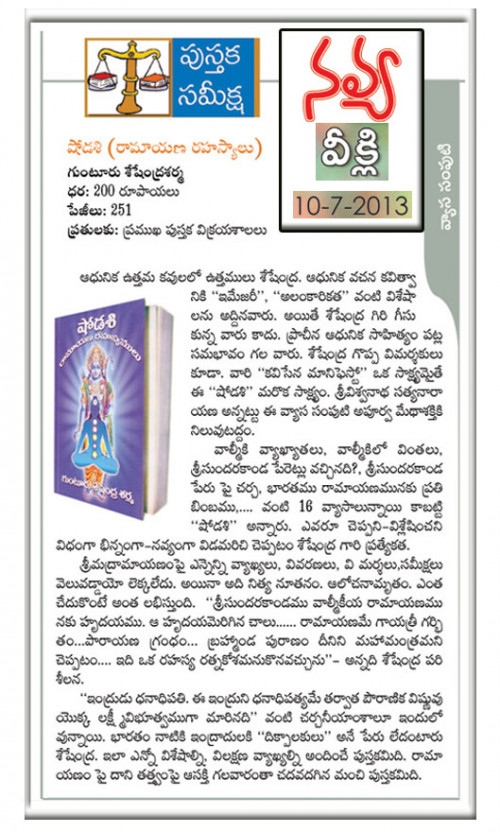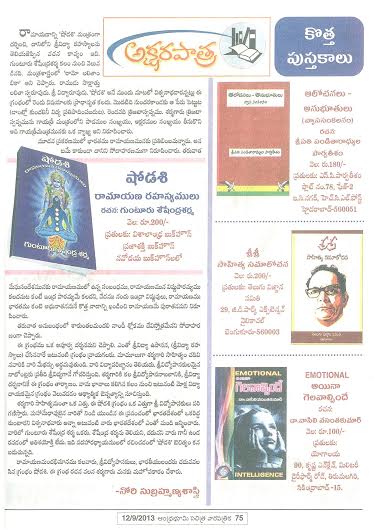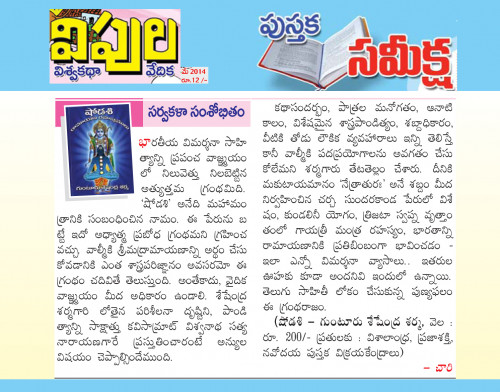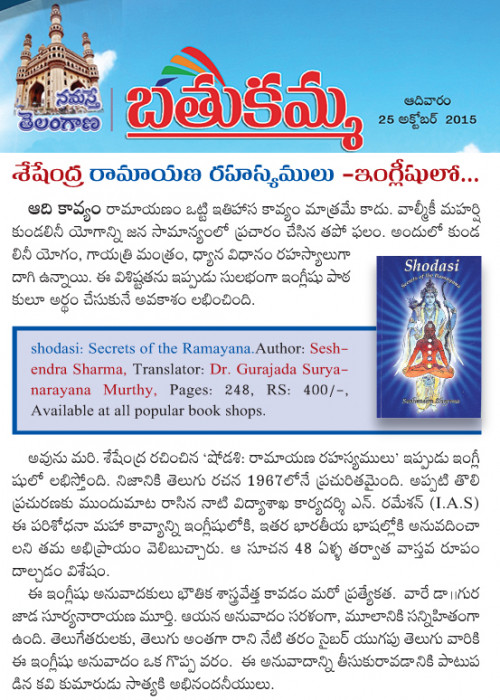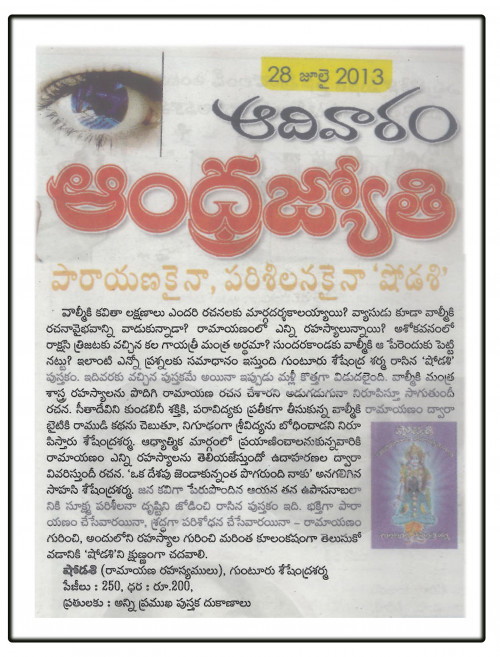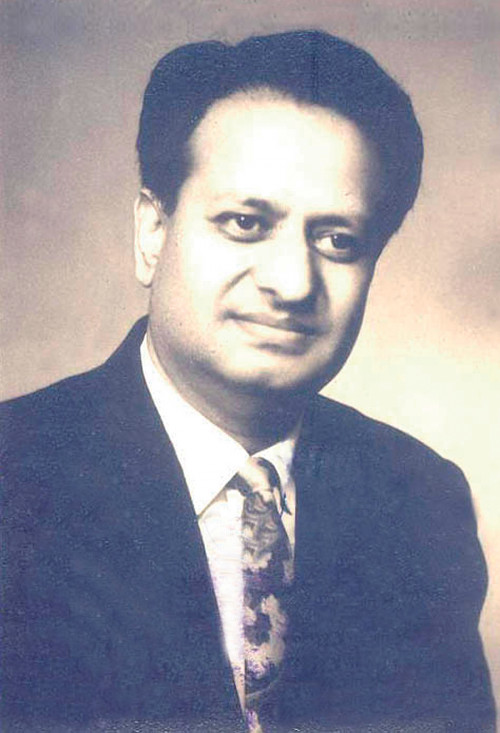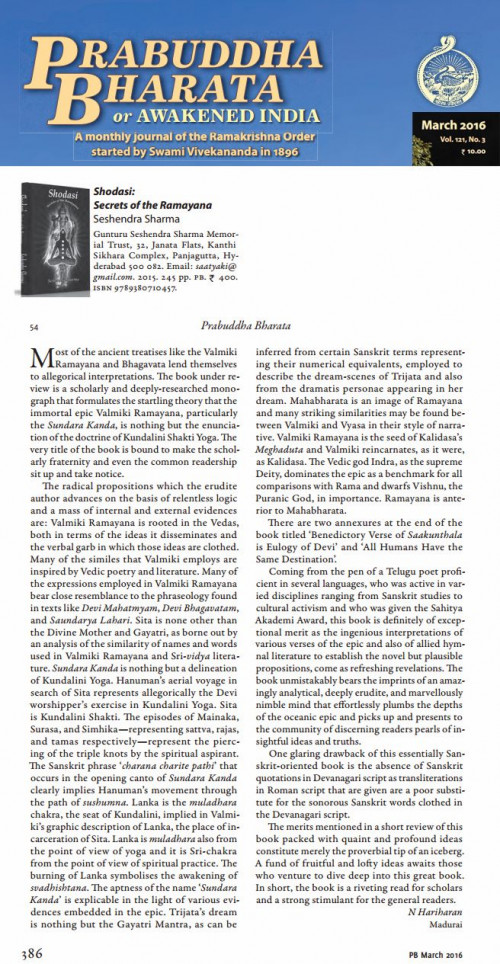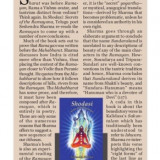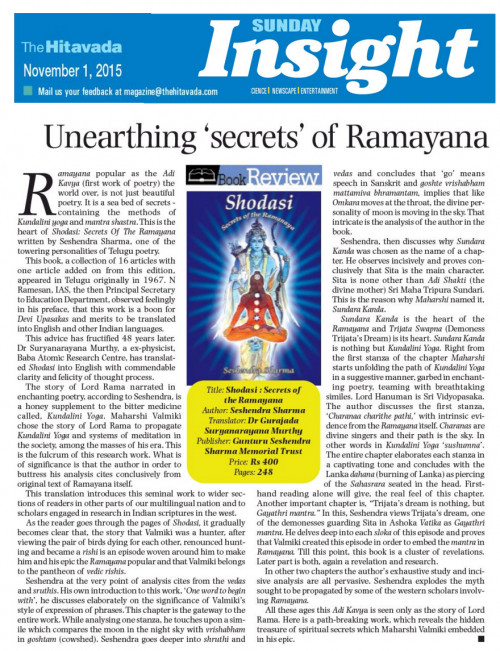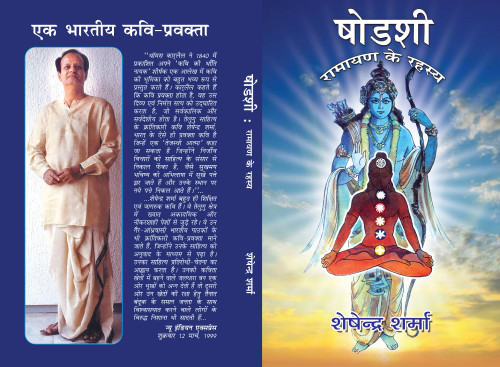SHODASI : SECRETS OF THE RAMAYANA
Kundalini Yoga & Gayathri Mantra in Valmiki Ramayana
ENGLISH HINDI AND TELUGU ORIGINAL
AUTHOR : SESHENDRA SHARMA
Seshendra : Visionary Poet of the Millennium
http://seshendrasharma.weebly.com
https://seshen.tributes.in/
REVIEWS :
https://www.facebook.com/shodasi/
Books :
https://kinige.com/author/Gunturu+Seshendra+Sharma
Valmiki , The Sage of 5th century B.C wrote The Ramayana not to narrate the story of Rama in an absorbing style. Though the epic poem presents Rama’s Journey of life in enchanting poetry , the story and the enchanting poetry are sugar coating or honey to the organic medicine called Kundalini Yoga. Maharshi Valmiki wrote the Ramayana to spread / propagate Kundalini Yoga among the masses. Thus the soul of The Ramayana is Kundalini Yoga / Sri Vidya. Valmiki embedded Kundalini Yoga in the Chapter titled “ Sundara Kanda” . Hanuman and Ravana are Kundalini Yogis of Samaya and Kaula Paths.
And in Sundara Kanda , he inserted “ Trijata Swapna “ , dream sequence of a demon and in it embedded the Gayathri Mantra. The concepts of Vishnu and Avatar (reincarnation) were nonexistent during the Ramayana Period.
Seshendra Sharma , Scholar - Poet in his Magnum Opus of Research “ Shodasi : Secrets of The Ramayana “ reveals these secrets lying hidden for thousands of years .
* * * * *
How old is Valmiki Ramayana? One Calculation says 8 lacks 70 thousand Years. Going by the Christian calendar dating to approximately the 5th to 4th century BC. According to Indian classification of time Ramayana belongs to the Treta Yuga and today we are in the Kali Yuga. All these millions of years the human civilisation the world over, recognised it as the first poetry and in this part of the world i.e. the Indian Subcontinent the central character of the epic is present as an idol of worship in thousands of temples and in every household of believers.
But here is a research work which says Ramayana is merely poetry to the naked eye whereas it is an ensemble of invisible secrets which have been lying unnoticed all these ages.
What could have been the Valmiki Maharshi’s vision which made him chisel an epic poem which is pregnant with startling secrets?
Shodasi : Secrets of the Ramayana , a Magnum Opus comprising both revelations and research findings written in Telugu 47 Years ago is translated into English by Dr. G.S.Murthy , a 86 year old physicist (Retrd) from BARC. Dr. Murthy observes about Shodasi that “the approach adopted by Seshendra Sharma is unprecedented. .. His conclusion that Ramayana is closer to Sruthi than any other scripture is very significant and is based on the intrinsic evidence in the Ramayana itself.... it is a revolt against the customary methods followed to understand the status of Ramayana in the Sanskrit Literature.”
The fulcrum of Shodasi is that poetry in Ramayana is a supplement to the bitter medicine called “Kundalini Yoga” and Ramayana is divine Ambrosia for all mundane afflictions and problems that beset the human kind.
Seshendra reveals that Sundara Kanda is the heart of Ramayana and it is nothing but Kundalini Yoga . And the heart of Sundara Kanda is Trijata ‘s Dream , which is nothing but Gayatri Mantra.
Kundalini Yoga which is also known as Sri Vidya is awakening of inner powers dormant in humans through meditation. The very 1st Shloka of Sundara Kanda is analysed and explained exhaustively by the author from several angles. “Chaarana Charithe pathi..(Sky-Path) “is , according to the author the Sushumna in Humans. Lanka Dahana ( Reducing Ravana’s Empire Lanka to ashes ) is the climax of the Kundalini Yoga which is Sahasrara Bhedana. The author analyses citing evidence from the Ramayana original text , that both Paths of Kundalini Yoga , Samaya and Kaula ways are shown in the epic.
What is of paramount importance in this work is that each exposition refers to a cluster of references germane to the main discussion. Hence it is obvious that this work is a scholastic paradise to people who are conversant with Sanskrit literature and other ancient scriptures. A pedestrian reader cannot even peep into Shodasi . Seshendra’s introduction “One word to begin with “sets the tone and tenor of the work. He dilates at length how Sanskrit language is moulded by Valmiki on the lines of Sruthi and Veda to envelop his central theme in suggestive and oblique style.
It is said Valmiki wrote Ramayana in 24 thousand Shlokas taking each syllable of Gayatri Mantra, which has 24 syllables. Seshendra Shows convincingly, where the Gayathri Mantra itself is located in Ramayana. He says “ Sundara Kanda “ is the heart of Ramayana and Trijata ‘s Dream is Sundara Kanda’s heart. “ Maharshi created an apparent episode of “Trijata Swapna “ and through this he embedded Gayathri Mantra in it. “
This book is replete with several such revelations and unnerving observations. The chapters on “ Relationship between Ramayanayana and Megha Sangesham “ “Indra supreme deity “ compel the reader to stop and think at the turn of every observation. This reviewer does not like to “spill all the beans “.
Dr. Murthy, the translator, aptly observes “ It needs a very attentive mind and adequate patience to follow author’s arguments “. Seshendra Sharma( http://seshendrasharma.weebly.com ) , winner of Sahitya Akademi Award for his “Kaala Rekha “( Arc of Blood ) a collection of essays in comparative literature , a fellow of the Akademi During his life time whose Long Poem “ My Country – My People – Modern Indian Epic “was nominated for Nobel in 2004 is scholar –poet of our times . His Kavisena Manifesto (Modern Indian Poetics), Kaala Rekha( Essays in Comparative Literature)are monuments of contemporary Indian Literature , unsurpassed to this day. His prose works prove that he is Albert Einstein of Indian Literature.
After completing the first round of reading the reader would certainly agree with Vishwanatha Satyanarayana ,Telugu poet of romantic era , recipient of Gyanpith Award for his “Ramayan Kalp Vriksh” who wrote preface to this book “ Every one , not only the telugu – speaking people all Indians must be grateful to him for writing this book”.
--------
Ramayana, a replica of Vedas
S. VARADARAJAN
There are several versions of the Sri Ramayana, one of the two greatest epics. Following Sri Valmiki Ramayana several editions have been published in various languages, besides scores of commentaries written across centuries. Late. Gunturu Seshendra Sharma, scholar poet of 20th Century unearthed secrets of the Ramayana through his popular Telugu book “Shodasi”.
The novelty of nomenclature Shodasi , called Sri Vidya is reflected , in the 16th Chapter . Sharma’s intellectual depth comes forth in analyzing Sundara Kanda specially through Kundalini Yoga . The author highlights hidden truth in Valmiki’s thought that is similar to Vedas and says that Trijata’s dream in Sundara Kanda reflects Gayatri Mantra of 32 Syllabi in 4 lines. Sharma pays rich encomiums in the description of Lanka surrounded by three impregnable borders. He compares these three borders with Trikuta viz... Shakti , Kaamaraaja , Vagbhava Kutas with those of Sri Vidya in Kundalini . A staunch believer of Vedas, the author feels that Ramayana is a replica of Vedas and oriented towards the character of Indra . He concludes that in Ramayana the mentioning of the supreme God is Indra and not Vishnu, as the presiding deity of valour in Vedas. Utterances of the word Vishnu were considered to be imaginary overstatements in the author’s view.
This book lends a new perspective to the Ramayana by adding the dimension of Kundalini Yoga .
The foreword by Vishwanatha Satyanarayana adds credibility to the book. The current work is an English translation of the original by Gurujada Suryanarayana Murthy , a scientist by profession . His proficiency in the subject is evident in the translation throughout that doesn’t swerve from the original’s purport.
The Hindu
India’s National Newspaper
(Friday Review: 2nd October 2015)
Shodasi
Astounding scholarship of Sanskrit classics
A product of deep research, intense intellectual labour
And amazing scholarship
The book under review which is an English translation by Dr. Gurajada Suryanarayana Murthy of the original Telugu Text represents a scholarly attempt by the erudite author to justify and prove the validity of certain radical propositions which he makes about the world – renowned Kavya – Valmiki Ramayana. The propositions that he makes are – 1. Sundara Kanda is an allegory of Kundalini Yoga 2. Sita is Kundalini Shakti 3. Hanuman’s search – mission of Sita symbolises Tantric Exercise of identifying the Kundalini Shakti and raising it from the Moola Dhara Chakra (denoted by Lanka) to Sahasrara Chakra 4. The descriptive terms employed about Sita hint at Sita being essentially a Kundalini Shakti 5. Trijata’s dream is nothing but Gayathri Mantra 6. Valmiki’s language has pronounced Vedic flavour 7. The phraseology employed by Valmiki corresponds largely to the terms employed in Lalitha Sahasra Nama , Durga Saptasati , Devi Bhagawatam etc.. 8. The aptness of the name Sundara Kanda is provable on Strong Grounds 9. Ramayana is anterior to Bharatha on various grounds such as the Vedic language employed in the former the reference of Valmiki and Ramayana in Mahabharata and absence of reference to Vyasa and Mahabharata episodes in Ramayana , Mention of Rama in Mahabharata and Rama’s greater antiquity than Pandavas and a host of other plausible evidences 10. Indra , the chief Vedic god more prominently featured and praised in Ramayana than Vishnu of the Puranic origin. 11. Megha Sandesham of Kalidasa originated out of the seed of Valmiki Ramayana and 12. The benedictory verse of Sakuntalam is eulogy of Devi.
The brain – tickling propositions are not just of the cuff remarks made without basis but credible theories buttressed with profuse quotations of relevant Sanskrit Texts , wide and deep study of the relevant treatises unassailable arguments based on internal and external evidences and astounding scholarship of Sanskrit classics.
On the flip side, there are a few errors in the transliteration of the Sanskrit texts. Had the Sanskrit passages from the treatises been provided in Devanagari Script also in addition to transliterated form in Roman Script value and appeal of this essentially Sanskrit oriented book would be much higher to the large and growing Sanskrit readership. The book is doubtless, a product of deep research, Intense intellectual labour and amazing scholarship.
The Vedanta kesari : August 2016
The Lion of Vedanta
A Cultural and Spirtual Monthly of the of the Ramakrishna Order since 1944
AN INTELLECTUAL FEAST
Along With utmost devotion
The author has clear understanding of not only of the Ramayana
but also Mantra Sastra , Vedas and Kundalini Yoga
His method is going deep into the subject and at the
same time comparing the same with ideas of other branches of literature
Shodasi , authored by Seshendra Sharma is a book of a special type . Though its purpose is to unfold secrets of the Ramayana many other aspects from different branches of knowledge also find a place there.
The Ramayana is read in every household with devotion. It narrates not only story of Rama but it also spotlights very intricate and subtler points in other branches of knowledge, a point not even noticed by many.
The author has clear understanding of not only of the Ramayana but also Mantra Sastra , Vedas and Kundalini Yoga . There are two approaches to understand the Sastras. One is vertical which is closely followed in Sanskrit Literature. It is reading a book with the help of commentary on it. In this method not only each word of the original analysed; its correct meaning and contextual purpose are also examined. The second is a horizontal method where in various ideas in the text are read not with one commentary but with many commentaries by different people. This gives total meaning of the text.
Seshendra Sharma follows both methods. His method is going deep into the subject and at the same time comparing the same with ideas of other branches of literature.
This needs a thorough understanding of various branches and ability to compare texts and spot new ideas and enjoy the same. For example , when Hanuman asks Sita who she is ,she replies ,“sama dvadasa tatraham raghavasya nivesane bhunjhana manushan bhogan sarva kama samrudhinee “ . Meaning “I enjoyed 12 years of mundane pleasure in the home of Rama”
Though she is not an ordinary human being, she enjoyed mundane pleasures. “ you may mistake that I am a mortal woman , but understand I am Sri Maha Lakshmi” . That was the message. The most important clue is the statement “ Aham Sarva Kama Samridhinee “ . In Devi Bhagawatham we find “ Matah Sankaree Kamade “ In Sri Sukta “ Sarva Kamartha Siddhaye “ and in Lalitha Sahasra Nama “ too it is stated “ Om Kamyayai Namah” . If Sita were to be just an ordinary being all these statements would have been irrelevant.
At another place she says “ Maya Ramasya Rajarshe Bharyayaya Paramatmanah” which means that she is wife of Paramatma. Hanuman , the devotee , recognized Sita to be none other than Jaganmata. Hence he could identify her easily as the divine mother and says “ tat sreemadyate tarat”. The word sreemat is used to mean brilliance Hanuman identifies Sita as Devi by the holy seed letter ( Sreem ) .
The book is full of comparisons between different branches of learning and surely a feast for one who could enjoy the existence of similar ideas at various places. It only proves that ways may be different but the goal is one.
Seshendra Sharma physically lifts the minds of the readers and offers an intellectual feast along with utmost devotion. Surely everyone should read this book and keep a copy of the same at home.
Goda Venkateswara Sastry
Tatvaloka : June 2016
The Splendour of Truth
( Monthly Magazine)
------------
Ramayan Through Kundalini Yoga
Shodasi is an ideal read for Sanskrit-literate readers
who are open to eclectic yogarthas and connotative meanings
--------
So you thought Vyasa was before Valmiki, Mahabharat was before Ramayan, Rama a Vishnu avatar, and tantrism distinct from vedism? Think again. In Shodasi: Secrets of the Ramayana, Telugu poet Seshendra Sharma re-reads the Ramayan to come up with a number of new conclusions.
Much of the book sets out to prove that Ramayan was written before the Mahabharat. Sharma discusses how Indra is cited more often than Vishnu, thus placing the context of the Ramayan closer to Vedic than Puranic thought. He quotes from the Mahabharat to show how it follows descriptions of hills, rivers from the Ramayan. The Mahabharat has some prose, and therefore, it must have been composed after Ramayan, which is entirely in poetry. These are only some of the numerous reasons that Sharma offers to suggest a new sequence of our itihasas.
Sharma’s book is also an experimental reading of the Ramayan through the interpretive lens of what he calls Kundalini yoga. Hanuman’s flight to Sri Lanka gets a new interpretation. “Charana Charite Pathi” is interpreted as the path of Kundalini, and the first verse of the Sundara Kanda “Tatho Ravana Nithayah” is interpreted by Sharma to refer to Hanuman traversing the sushumna nadi of the Kundalini.
Trijata’s dream becomes the Gayatri mantra through an imaginative recasting of words as numbers. Gaja (elephant) means eight, danta (teeth) means thirty-two, and maha-gaja-chaturdantam somehow also adds up to 32 syllables, which is the number of syllables in the Gayatri mantra. That Trijata’s dream is halfway through the Ramayan also becomes significant for Sharma, he calls it the ‘central bead’ in the Ramayan garland of 24,000 beads. Identifying 32-syllables as the Gayatri follows a convention, for mantras are referenced by the number of syllables; however, it is the “secret” yogartha—or mystical, anagogical translations—derived by Sharma that becomes problematic, unless he is considered an authority in his own right.
conclude that the name Sundarakand is unrelated to any descriptions of beauty of any of the main characters in the Ramayan. However, Soundarya and Tripura-Sundari are well-known conventions in the tantric tradition and hence, Sharma concludes that Sundarakand derives its name from Shakti’s beauty, and “Sundara-Hanuman” means “Hanuman who is a devotee of Devi” (117).
A coda in this book is about the benedictory verse in Kalidasa’s Sakuntalam which has traditionally been understood to refer to Ishwara. Sharma re-interprets this verse highlighting the “eight forms” of the last line as the eight forms of Devi that please Ishwara.
This book is suitable for a reader who is Sanskrit-literate and open to eclectic yogarthas and connotative meanings. Sharma cites substantially from the Ramayan in roman but without diacritics, this is difficult to follow; and he does not always include translation. Sharma often cites commentators without citing names and sources. It is not clear why the book is called Shodasi—readers may note, this book is not about the Srividya tradition. Even if the reader is unconvinced by Sharma’s reasoning or methodology, the free flow of references may prove absorbing for a reader interested in the subject.
This could also be an eclectic reference for a scholar researching tantric elements in the Ramayan.
- Mani Rao
The Sunday Standard Magazine
The New Indian Express
29th November 2015
---------------------------
Scholarly and deeply researched monograph
Pearls of insightful ideas and truths
Most of the ancient treatises like the Valmiki Ramayana and Bhagavatha lend themselves to allegorical interpretations. The book under review is scholarly and deeply researched monograph that formulates the startling theory that the immortal epic Valmiki Ramayana, particularly, Sundara Kanda, is nothing but the enunciation of the doctrine of Kundalini Shakthi Yoga. The very title of the book is bound to make the scholarly fraternity and even the common readership sit up and take notice. The radical propositions that the erudite author advances are on the basis of relentless logic and a mass of internal and external evidences are: Ramayana is rooted in Vedas, both in terms of ideas it disseminates and its verbal garb in those it is clothed. Many of the similes that Valmiki employs are inspired by vedic poetry and literature. Many of the expressions employed in the Valmiki Ramayana bear close resemblance to phraseology found in texts like Devi Bhagavatham, and Soundarya Lahari. Sita is none other than Divine Mother and Gayathri. As borne out by an analysis of similarity of names and words used in Valmiki Ramayana and Sri Vidya Literature. Sundara Kanda is nothing but delineation Kundalini Yoga. Hanuman’s aerial voyage in search of Sita represents allegorically the devi worshipper’s exercise in Kundalini Yoga. Sita is Kundalini Shakti. The episodes of mainaka, surasa and Simhika – representing satwa, rajas, tamas respectively –represent piercing of the triple knots by the spiritual aspirant. The Sanskrit phrase “Charana Charithe pathi” that occurs at the opening Canto of Sundara Kanda clearly implies Hanuman’s movement through the path of Sushumna. Lanka is the Mula Dhara Chakra, the seat of Kundalini implied in Valmiki’s graphic description of Lanka, the place of incarceration of Sita. Lanka is Muladhara also from the point of view of Yoga and it is Sri Chakra from the point of view of Spiritual practice. The burning of Lanka symbolises awakening of Swadhishthana. The aptness of name Sundara Kanda is explicable in the light of various evidences embedded in the epic. Trijata’s dream is nothing but the Gayathri Mantra as can be inferred from certain Sanskrit terms representing their numerical equivalents employed to describe dream – scenes of Trijata and also from Dramatis Personae appearing in her dream. Mahabharata is an image of Ramayana and many striking similarities may be found between Valmiki and Vyasa in their style of narrative. Valmiki’s Ramayana is the seed of Meghadootha and Valmiki reincarnates, as it were, as Kalidasa. The vedic god Indra , as the supreme deity dominates epic as a benchmark for all comparisons with Rama and dwarfs Vishnu, the Puranik God, in importance. Ramayana is anterior to Mahabharata. There are 2 annexures at the end of the book “benedictory verse of Sakunthalam is nothing but eulogy of Devi “and “All Humans have same destination” . Coming from the pen of the Telugu poet proficient in several languages, who was active in various disciplines ranging from Sanskrit studies to Cultural activism and who was given the Sahitya Akademi Award, this book is definitely of exceptional merit as the ingenious interpretations of various verses of the epic and also of allied hymnal literature to establish the novel but plausible propositions, come as a refreshing revelations. The book unmistakably bears imprints of an amazingly analytical, deeply erudite and marvellously nimble mind that effortlessly plumbs the oceanic epic and picks up and presents to the community of discerning readers pearls of insightful ideas and truths. One glaring drawback of this essentially Sanskrit-oriented book is the absence of Sanskrit quotations in Devanagari script as transliterations in roman script that are given are poor substitute sonorous Sanskrit words clothed in Devanagari script. The merits mentioned in a short review of this book packed with quaint and profound ideas constitute merely the proverbial tip of an iceberg. A fund of fruitful and lofty ideas awaits those who venture dive deep into this great book. In short this book is a riveting read for scholars and a strong stimulant for the general readers. –
N. Hariharan
Madurai
Prabuddha Bharata
March 2016
A monthly journal of the Ramakrishna Order
started by Swami Vivekananda in 1893
Unearthing secrets of Ramayana Ramayana
A sea-bed of secrets
A great boon to Devi Upasakas and Practioners of Sri Vidya
The Ramayana popular as the Adi Kavya (first work of poetry) the world over is not just beautiful poetry . It is a sea bed of secrets – containing the methods of Kundalini yoga and mantra sastra . This is the heart of Shodasi : Secrets of the Ramayana authored by Seshendra Sharma , one of the towering personalities of Telugu Poetry . This book, a collection 16 articles with one article added on from this edition appeared in Telugu Original in 1967. Mr. N.Ramesan IAS , the then Principal Secretary to Education Dept , the then AP Govt observed feelingly in his preface , that this work is a boon for Devi Upasakas and merits to be translated into English and other Indian Languages. This advice has fructified after 48 Years. Dr. Suryanarayana Murthy , a physicist (retired : Baba Atomic Research Centre ) has translated Shodasi into English with commendable clarity of grasp over the subject and felicity of thought process and flow of reading. The story of Rama narrated in enchanting poetry, according to Seshendra is a honey supplement to the bitter medicine called Kundalini Yoga. Valmiki Maharshi chose the Story of Rama to propagate Kundalini Yoga and systems of meditation in the society, among the masses of his era. This is the fulcrum of this Research work. What is of significance is that the author , in order to buttress his analysis and arguments cites extensively and conclusively from the Original Text of Ramayana itself. This Translation introduces this seminal work to wider sections of readers in other parts of our multilingual nation and to scholars engaged in research in Indian scriptures in the west. As the reader goes through the pages of Shodasi it gradually becomes clear that , the story that Valmiki was a Hunter , after viewing the pair of birds dying for each other renounced hunting and became a Rishi is an episode woven around him to make him and his epic the Ramayana popular and that Valmiki belongs to the pantheon of Vedic Rishis . Seshendra at every point of analysis cites from the Vedas and sruthis. His own introduction to this work “one word to begin with “ he discusses elaborately on the significance of Valmiki’s Style of expression of phrases . This chapter is the gateway to the entire work. While analysing one stanza of he touches upon a simile Which compares moon in the night sky wit vrishabham in Goshtam (cowshed). Seshendra goes deeper into shruthi and Vedas and concludes that go means in Sanskrit speech and “goshte vrishabham mattamiva bhramantam “ implies that like Omkara moves at the throat the divine personality of moon is moving in the sky. That intricate and deep is the analysis of the author. Seshendra , then discusses why sundara kanda was chosen as the name of a chapter . He observes incisively and proves conclusively that Sita is the main character of this Kanda and Sita is none other than Adi Shakti ( The Divine Mother ) Sri Maha Tripura Sundari.This is the reason why Maharshi named it Sundara Kanda. Sundara Kanda is the heart of the Ramayana and Trijata Swapna (Demoness Trijata’s Dream) is its heart. Sundara Kanda is nothing but Kundalini Yoga . Right from the 1st stanza of the chapter Maharshi starts unfolding the path of Kundalini Yoga in a suggestive manner garbed in enchanting poetry teaming with breath taking similes. Hanuman is SriVidyopasaka. The author discusses the 1st stanza “Chaaranaa Charithe pathi “ with intrinsic evidence from the Ramayana itself. Charanas are Divine Singers and their path is the sky . In other words in Kundalini Yoga “Sushumna “. The entire chapter elaborates each stanza in a captivating tone and concludes with Lanka Dahana ( Burning of Lanka ) as piercing of the Sahasrara seated in the head. First hand reading alone will give the unnerving feel of this chapter. Another important chapter is “ Trijata’s dream is nothing but Gayathri mantra “. In this , Seshendra views Trijata’s Dream, one of the demonesses guarding Sita in Ashoka Vana as Gayathri mantra. He dwelves deep into each Sloka of this episode and proves convincingly that Valmiki created this episode in order to embed the mantra in Ramayana. Till this point this book is a cluster of revelations. “The later part is both revelation and research. Seshendra in the chapter “ Indra is the Supreme Deity of Ramayana “ discusses each stanza of the Ramayana and goes on to reveal that at the time when Valmiki was writing the Ramayana the concepts of Vishnu and incarnation (Avatar ) were non– existent . Indra is the supreme deity of the Ramayana. In other 2 chapters the author‘s exhaustive study and Incisive analysis are all pervasive. Seshendra explodes the myth sought to be propagated by some of the Western Scholars that the Bharatha precedes the Ramayana . Shodasi , as rightly pointed out in one preface, is a great boon to Devi Upasakas and Practioners of Sri Vidya. All these ages this Adi Kavya is seen only as the Story of Rama. Here is a path breaking work which reveals the hidden treasure of spiritual secrets which Valmiki Maharshi embedded them in his epic.
Insight ( Sunday Magazine )
The Hitavada ( English Daily ) 1st November 2015
16 images — 3 years ago
There's nothing to show here.


